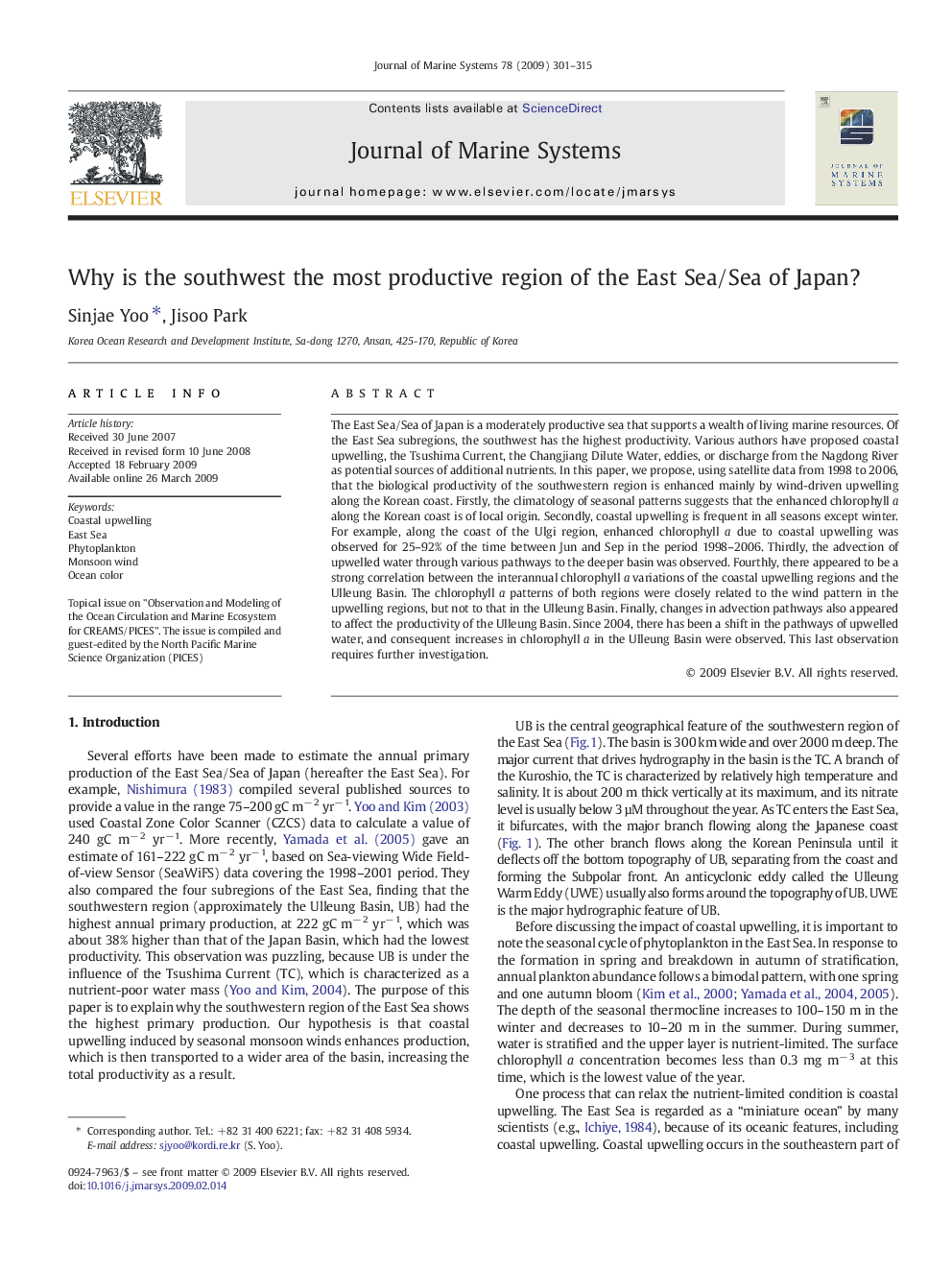| کد مقاله | کد نشریه | سال انتشار | مقاله انگلیسی | نسخه تمام متن |
|---|---|---|---|---|
| 4548806 | 1327930 | 2009 | 15 صفحه PDF | دانلود رایگان |

The East Sea/Sea of Japan is a moderately productive sea that supports a wealth of living marine resources. Of the East Sea subregions, the southwest has the highest productivity. Various authors have proposed coastal upwelling, the Tsushima Current, the Changjiang Dilute Water, eddies, or discharge from the Nagdong River as potential sources of additional nutrients. In this paper, we propose, using satellite data from 1998 to 2006, that the biological productivity of the southwestern region is enhanced mainly by wind-driven upwelling along the Korean coast. Firstly, the climatology of seasonal patterns suggests that the enhanced chlorophyll a along the Korean coast is of local origin. Secondly, coastal upwelling is frequent in all seasons except winter. For example, along the coast of the Ulgi region, enhanced chlorophyll a due to coastal upwelling was observed for 25–92% of the time between Jun and Sep in the period 1998–2006. Thirdly, the advection of upwelled water through various pathways to the deeper basin was observed. Fourthly, there appeared to be a strong correlation between the interannual chlorophyll a variations of the coastal upwelling regions and the Ulleung Basin. The chlorophyll a patterns of both regions were closely related to the wind pattern in the upwelling regions, but not to that in the Ulleung Basin. Finally, changes in advection pathways also appeared to affect the productivity of the Ulleung Basin. Since 2004, there has been a shift in the pathways of upwelled water, and consequent increases in chlorophyll a in the Ulleung Basin were observed. This last observation requires further investigation.
Journal: Journal of Marine Systems - Volume 78, Issue 2, September 2009, Pages 301–315